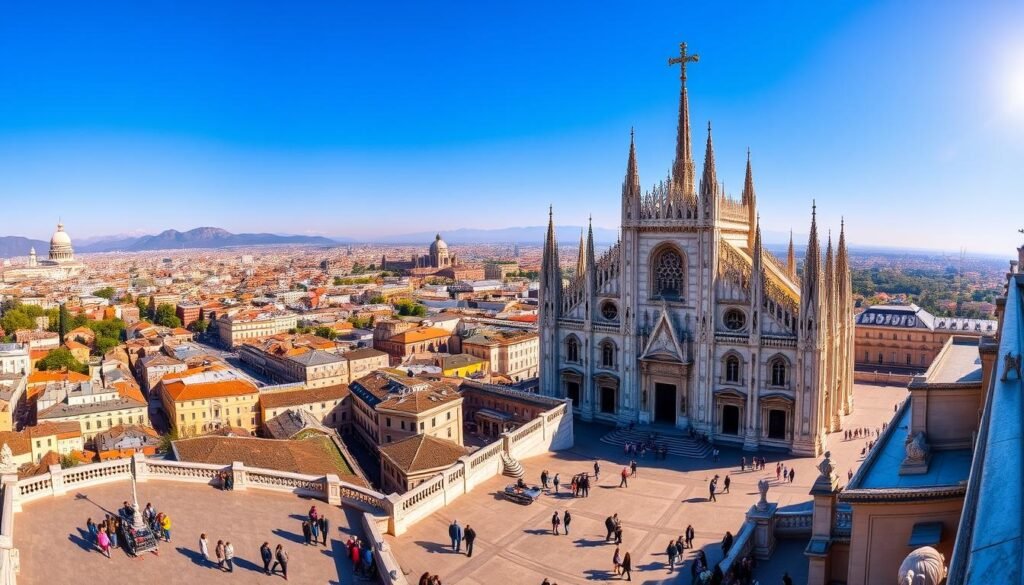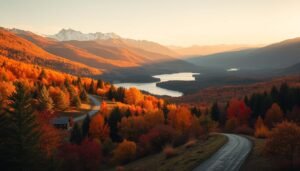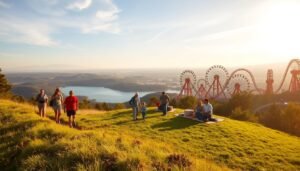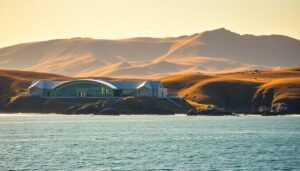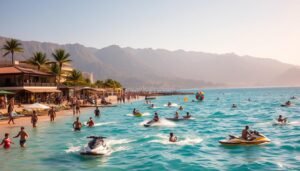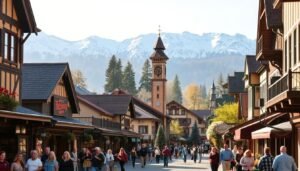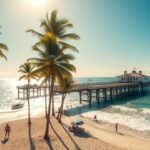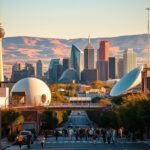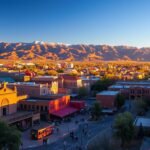Did you know the Duomo is Italy’s largest church and welcomes millions each year? I found that fact startling the first time I stood beneath its spires. It framed my whole visit and set a fast pace for discovery.
I set out to weave icons and hidden corners into one clear route. From Teatro alla Scala and The Last Supper to aperitivo hours at Camparino and the canal glow of Navigli, my plan balanced major highlights with quiet finds.
I explain when to buy the 72-hour combo ticket, where free museum days help save cash, and how a center-first route around Piazza del Duomo makes efficient use of short stays. My notes also map modern towers at Porta Nuova and calm courtyards in Brera.
For a concise list of essentials, check this must-not-miss guide I used while planning my days.
Key Takeaways
- Buy official combo tickets ahead for the Duomo and rooftop access.
- Plan center-first routes around Piazza del Duomo for efficiency.
- Catch aperitivo at historic cafés and the evening vibe along Navigli.
- Use free museum days and smart tickets to save time and money.
- Mix famous landmarks with quiet courtyards for a balanced experience.
Iconic Milan: Duomo di Milano, Piazza del Duomo, and the City Center
Standing in Piazza del Duomo feels like finding the city’s heartbeat—white marble spires reach up and the golden Madonnina watches over everyone. I always start here and let the scale sink in; the Duomo is Italy’s largest church and a true world-class sight.
The façade bristles with more than 3,400 statues and 100 gargoyles. I love the way the marble “walls” catch morning light and how nightfall gives the square a cinematic hush. Locals meet by the equestrian statue of Vittorio Emanuele, which makes an easy landmark.
Pro tip: I buy the official €20 combination ticket for the cathedral and rooftop. It’s valid for 72 hours, so I spread visits across days and pick off-peak times for the terraces. Check online on your ticket day for lift versus stairs options to save time.
- Early morning for photos.
- Night visits for mood and fewer crowds.
- Plan extra minutes on the rooftop for close-up shots.
Galleria Vittorio Emanuele II: Fashion, History, and a Lucky Spin
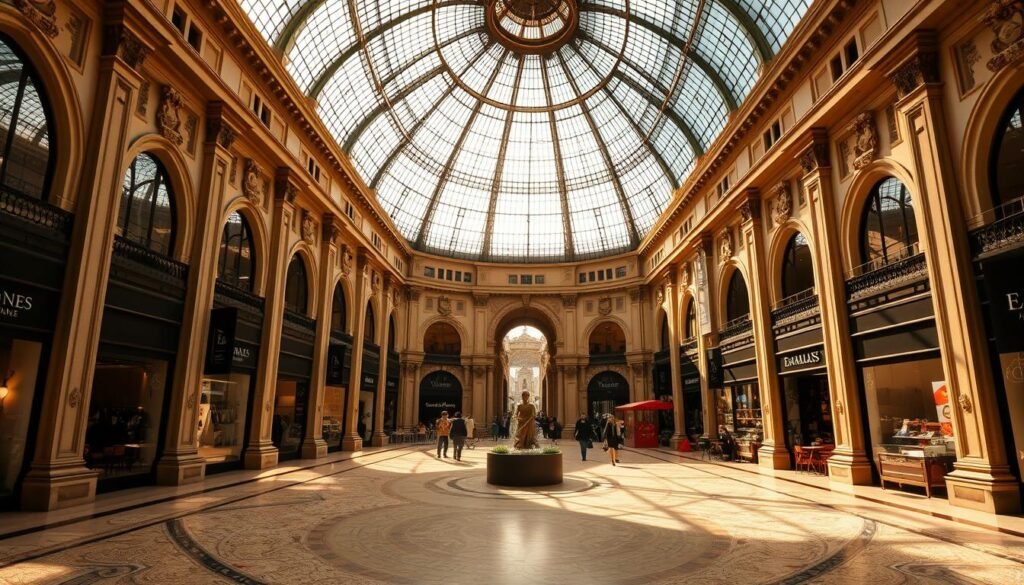
I step from the piazza into a vaulted world where iron and glass frame luxury boutiques and daily rituals. Built in 1867, the arcade’s grand glass canopy floods the floors with light and gives every window display a dramatic backdrop.
Spin on the bull’s mosaic for good luck and snap the glass-vaulted ceiling
I always pause at the Turin bull mosaic and spin my right heel for luck. It’s a cheerful ritual that links tourists and locals across the years.
Early morning yields the best photos—the mosaicked ceilings glow and the arcade feels almost private.
Camparino in Galleria for a classic aperitivo
Camparino remains a landmark of aperitivo culture. The cast-iron chandeliers and mosaics recall evenings when Verdi and Toscanini stopped for a Campari-based cocktail.
“Even if you’re not shopping, the atmosphere delivers pure fashion inspiration.”
I wander past iconic brands and the original Prada sign, thinking about how design and commerce have shaped this place over the years. For more on visiting, see the official guide at Galleria Vittorio Emanuele II.
Castello Sforzesco to Parco Sempione: A Walk Through Milan’s Past and Green Heart

A short walk from Piazza Cairoli brings me from the fortress gates into Parco Sempione’s leafy calm.
Castello Sforzesco wears its past plainly: Leonardo da Vinci helped shape parts of the defenses, and the complex now houses seven museums. The courtyards and outer walls are free to explore every day, which makes a quick visit easy on the budget.best-time-to-visit-colorado
Free days, highlights, and a simple half-day loop
I time museum visits for free-entry windows. Admission is free on the first and third Tuesdays from 2pm, and every first Sunday of the month.
Inside, standout pieces include Michelangelo’s Rondanini Pietà — a powerful example of a master’s final work. If you prefer low cost, tour the outer grounds and save museums for those free hours.
- I enter through the castle gates and wander the red-brick courtyards.
- I build a half-day loop: courtyards, a museum or two (tickets permitting), then the park.
- Parco Sempione is my go-to green escape for a bench break, gelato, and people-watching.
Walking from the castle through the park to Arco della Pace takes only a few minutes at a relaxed pace. The arch area is lively and lined with alfresco tables and small bars that suit an evening aperitivo.
| Stop | What I see | Cost |
|---|---|---|
| Castello courtyards | Red-brick walls, open spaces | Free |
| Museum of Ancient Art | Historic collections, Rondanini Pietà nearby | Paid (free windows available) |
| Parco Sempione | Lawns, benches, people-watching | Free |
| Arco della Pace | Aperitivo scene, outdoor tables | Varies (bars) |
If time is tight, I join a short tour here. Guides point out small historical details I would miss alone. This route balances classic history and local energy for a neat half-day in the city.
Brera’s Artistic Soul: Streets, Cafés, and Quiet Corners I Love
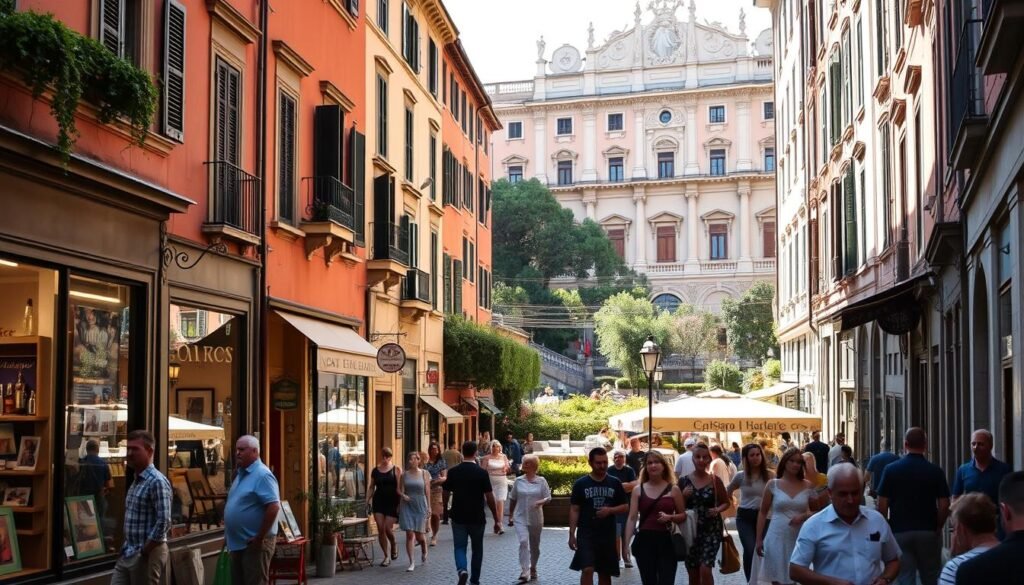
I wandered Brera at my own pace and found its narrow streets invited slow exploration. Via Fiori Chiari, Via Fiori Oscuri, Via Madonnina, and Piazza del Carmine felt made for aimless steps and small surprises.best-time-to-visit-chicago
I slow down here; this is a place where galleries and cafés set the rhythm. Small shops brimmed with local style, and the mix of fashion and hand‑made work felt honest rather than staged.
The Brera Botanic Garden is a quiet, free green pause (Mon–Fri; seasonal hours vary). I slipped inside for a breather and a moment away from the busier parts of the city.
The Biblioteca Braidense is worth a stop if you carry ID and are 16 or older. For masterpieces, I timed a visit to the Pinacoteca di Brera on a free Sunday or bought specific tickets for works I wanted most.
I often end an afternoon with a long lunch at small restaurants on a side lane. Artists mingle with locals here, which gives the neighborhood an easy, lived‑in warmth.
Modern Milan: Porta Nuova and CityLife’s Skyline Moments

Porta Nuova surprised me with a skyline that feels like a city reimagined—sharp glass, new plazas, and planted façades. I start at Piazza Gae Aulenti where the fountain plaza reflects nearby towers and sets a brisk, modern mood.
Biblioteca degli Alberi is my favorite reset. The park’s paths and public art offer a calm break and a fresh angle on the surrounding structures.
Piazza Gae Aulenti, Biblioteca degli Alberi, and Bosco Verticale
I always point out Bosco Verticale when friends care about design. Its planted balconies make those residential towers feel alive and unique anywhere in the world.
The “Straight,” “Twisted,” and “Curved” towers at CityLife
CityLife gives me a second skyline hit. The Isozaki, Hadid, and Libeskind towers—nicknamed the Straight, Twisted, and Curved—frame wide walkways and a compact shopping district at their base.
My practical loop: start at Gae Aulenti, walk the park, pass Bosco Verticale, link toward Corso Como, then head on if I have a few extra minutes. Late afternoon light makes glass façades glow and photos richer.
| Spot | Highlight | Best time |
|---|---|---|
| Piazza Gae Aulenti | Fountain plaza, mirrored glass reflections | Late afternoon |
| Biblioteca degli Alberi | Green paths, public art, calm benches | Anytime for a reset |
| Bosco Verticale | Planted façades, standout design | Daylight for detail |
| CityLife towers & mall | Straight, Twisted, Curved skyline; shopping | Afternoon to evening |
Quadrilatero della Moda: Where Luxury Brands Meet Design
I wander the square of streets that define quadrilatero della moda and treat every window like a mini exhibit.best-cities-to-visit-in-japan
Via Montenapoleone and Via della Spiga anchor the scene with major brands and curated displays. Via Manzoni and Corso Venezia add elegant façades and easy people-watching.
I often slip into Cova Montenapoleone for a coffee and a pastry. It is a classic pause where I watch street style drift past.
For design finds, Alessi’s flagship feels like a small museum of household objects. Museo Poldi Pezzoli and Bagatti Valsecchi offer Renaissance art amid couture, which balances retail and culture.
Via Gesù is quieter and feels timeless. I usually plan a light lunch or an early restaurant reservation nearby so I don’t waste time backtracking.
- I treat each window as a lesson in design and composition.
- I make room for a slow stroll; it’s easy to linger longer than you expect.
- Even without shopping, this place serves great food and memorable street scenes in the heart of the city.
Cultural Highlights: Teatro alla Scala, The Last Supper, and More
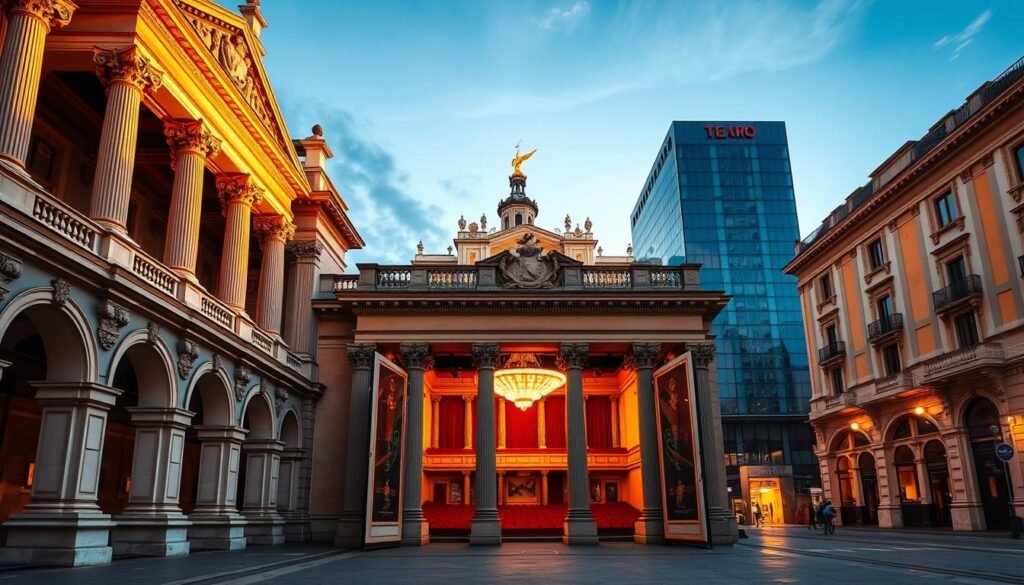
A La Scala visit and a slot for the Last Supper often shape my whole cultural day. I map my schedule around the quarterly ticket releases and La Scala’s season calendar so I don’t miss a key experience.
Booking windows and timing Last Supper tickets
The Last Supper reservations drop online in quarterly waves (for example, mid‑March for June–August). I set reminders and try to book early because slots sell out fast. The mural sits inside the refectory of Santa Maria delle Grazie, so I allow extra minutes to absorb the art and the church setting.
La Scala season, museum option, and dress
La Scala’s season opens on December 7 (Sant’Ambrose) and runs through mid‑July. If I can’t catch an opera, I visit the theater museum for a behind‑the‑scenes look. I dress elegantly for performances; arriving early helps me enjoy the hall’s ambiance.
- I plan The Last Supper first—book tickets in the quarterly drops.
- If primary sales sell out, I check reputable resellers or a guided tour that includes a ticket.
- I pair Ambrosiana and Fondazione Prada for historic and contemporary counterpoints.
“These cultural pillars make this city one of the world capitals for art and performance.”
things to do in milan That Are Free (or Almost): My Budget-Friendly Picks

I learned that smart timing and a few free stops can fill whole days with wonder.
Top free highlights: I start at Piazza del Duomo for the façade and photo ops, then walk toward Castello Sforzesco and enjoy the courtyards and outer walls without paying entry.
I mark free museum days on my calendar. Museo del Novecento and Castello Sforzesco open free on the first Sunday and on first/third Tuesdays from 2pm. Pinacoteca di Brera, Armani/Silos, and Gallerie d’Italia also offer first‑Sunday access.
For an almost‑free moving tour, I hop on vintage trams. Lines 1 and 2 give scenic routes and accept tap-to-pay. The system calculates the cheapest fare at day’s end, so I don’t need paper tickets.
- I map a free day around the icons and balance indoor museums with Brera’s cobblestone streets and the Botanic Garden.
- Lines 1 and 2 are my favorite moving tour and a perfect example of budget sightseeing.
- When I’m hungry I look for bars offering aperitivo plates—one drink often covers snacks and stretches the budget.
- I save one paid highlight for another day so I avoid FOMO while keeping this route low cost.
| Spot | Why visit | Best free hours |
|---|---|---|
| Piazza del Duomo | Façade photos, public square energy | Anytime |
| Castello Sforzesco | Outer courtyards, architecture | First/third Tuesday from 2pm; first Sunday |
| Museo del Novecento & Pinacoteca | Modern and classic art on free days | First Sunday; select Tuesdays from 2pm |
| Vintage trams (Lines 1 & 2) | Scenic city route, tap-to-pay | Anytime (day ticket auto-calculated) |
Hidden Gems and Street Stories: Cattelan’s L.O.V.E., Art Nouveau, and Rainbow Streets
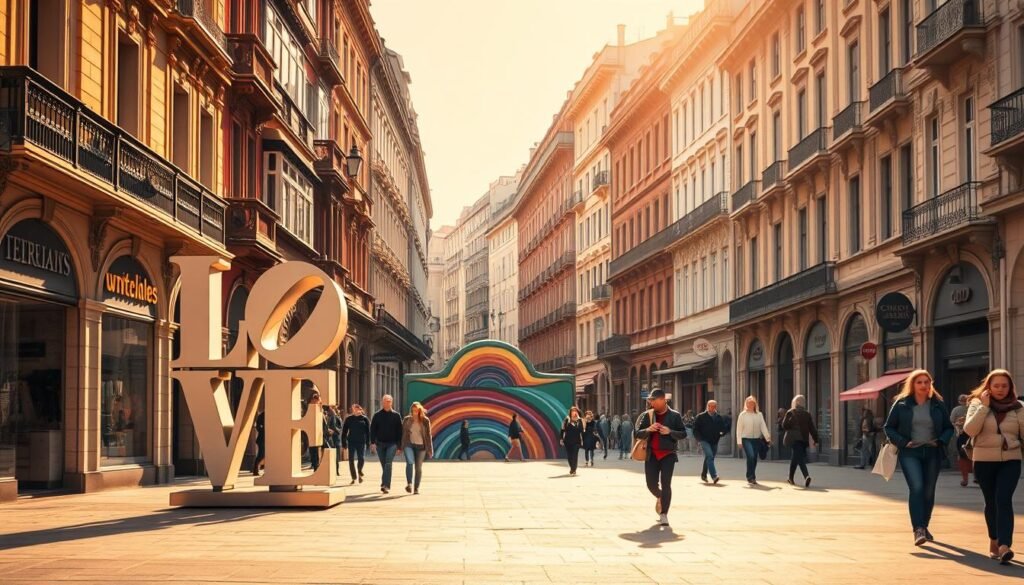
I often chase odd details—an outsize sculpture or a row of painted villas—that reshape a familiar route. These small discoveries make a walk feel like a slow reveal rather than a checklist.
Piazza Affari’s “il dito” is impossibly bold. Maurizio Cattelan’s L.O.V.E. shows a fascist salute with every finger worn away except the middle. Interpretations vary, and I’ve heard new readings on different visits over the years. It blends art, finance, and provocation in one sharp gesture.
Piazza Affari’s public statement
I stop here first. The sculpture sparks conversation and draws locals and tourists into debate. I’ve seen artists sketch it, bankers pause, and school groups whisper guesses.best-time-to-visit-machu-picchu
Porta Venezia’s Stile Liberty
Casa Galimberti and Palazzo Castiglioni are textbook examples of Liberty design. Their façades sparkle with carved detail and floral motifs. I take a slow lap and pick a café nearby for a coffee break.
Via Lincoln, Rainbow District, and nearby Casa 770
Via Lincoln feels like a small seaside lane because of its colorful villas. It changes how the whole neighborhood registers for me within minutes. Close by, Casa 770 adds a distinct cultural layer that pairs well with the painted houses.
- I start at Piazza Affari and work outward, noting small, odd sights like an ear-shaped intercom or flamingos behind a gate.
- I visit L.O.V.E. multiple times and hear fresh takes every time; public art rewards repeat visits.
- These stops fit a relaxed afternoon; pair them with coffee and a short walk for the full experience.
| Spot | What I notice | Best time |
|---|---|---|
| Piazza Affari (L.O.V.E.) | Provocative sculpture that invites debate | Morning or late afternoon |
| Porta Venezia façades | Liberty carvings, floral motifs, elegant balconies | Daylight for detail |
| Via Lincoln & Casa 770 | Colorful villas and cultural landmark | Afternoon stroll |
| Villa Invernizzi gate | Flamingos visible through gates, quirky charm | Anytime (quiet moments best) |
If you want a short list that links this route with budget tips, see my free things list for nearby options and timing pointers. These streets and small works give a personal, local experience that stays with me long after I leave the city.
Churches with a Twist: From Optical Illusions to Legends
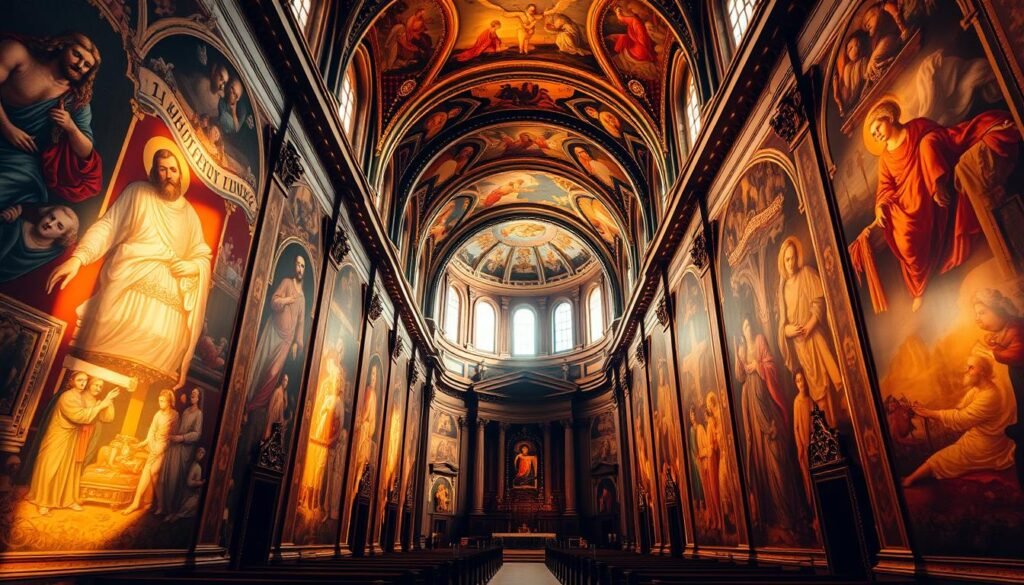
I followed a short loop of lesser-known churches and discovered illusions, legends, and fresco-packed interiors that felt almost private.
Santa Maria presso San Satiro’s mind-bending apse
I visit San Satiro to watch Bramante’s trick: the apse is only about 90 cm deep, yet it reads as a full chapel. Stand in the center aisle and let the perspective turn inches into meters.
Sant’Ambrogio’s legends and the “Devil’s Column”
Sant’Ambrogio honors the city’s patron saint and carries vivid local lore. I always point out the so-called “Devil’s Column” and a small bronze serpent that ties back to old biblical stories.
San Bernardino alle Ossa and San Maurizio’s frescoes
San Bernardino alle Ossa feels uncanny: the ossuary’s walls are lined with real bones and make history tangible in a quiet way.
San Maurizio overwhelms—in the best way—with fresco cycles often called the “Sistine Chapel” of the area. I slow down here and trace the painted narratives as an example of local art.
- I plan one short route that strings these sites together, mixing walks with coffee breaks.
- If I have only time for a single visit, I pick San Satiro for the illusion or San Maurizio for the frescoes.
Eat, Drink, and Nightlife: Aperitivo on Navigli and Classic Cafés

When the sun dips, the Darsena becomes the neighborhood’s living room, full of chatter and clinking glasses. I make this my evening plan: walk the canal banks, pick a small restaurant for aperitivo, then linger for gelato or dessert.
Naviglio Grande nights, Vicolo dei Lavandai, and the Darsena
The Naviglio Grande and Naviglio Pavese line up cafés and bars that glow after dark. I time my visit so reflections ripple with the lights; that moment feels like the perfect end of a busy city day.
I always swing by Vicolo dei Lavandai—those 19th‑century stones give the street a museum‑quiet charm.best-time-to-visit-maine
On the last Sunday monthly, Mercatone dell’Antiquariato fills the canal with stalls. I leave room for that market, then find a nearby restaurant for aperitivo.
Classic cafés and bars: Cova, Camparino, and design-forward stops
Cova is my go-to for coffee and a pastry; Camparino is where I order a pre-dinner spritz. Aperitivo usually runs 6–9pm and often serves enough snacks that the menu covers dinner.
My simple menu plan: one cocktail, a plate or buffet of snacks, then a second stop for dessert if I’m still hungry. The best way around here is on foot—pick one or two restaurants ahead and check their hours so you’re not wandering when it gets busy.
“I arrive a little early for outdoor seating; at 6pm it’s calm, later it gets lively fast.”
Conclusion
I finish my guide by matching one major anchor and one slower corner each day. I often pair the cathedral and the Galleria, then a Brera café or Parco Sempione stroll for balance.
Plan your days around a clear center and branch out to CityLife, Navigli, and the Quadrilatero della Moda when time allows. Pre-book the Last Supper and check free museum days; that saves minutes and opens up space for surprise finds.
My rule: keep one unplanned slot each afternoon. Even a short detour led me once to a tiny show that changed the whole experience.
With simple planning, iconic sites like Teatro alla Scala, the canals, and modern towers fit together in a way that makes the city feel friendly at the end of each day.


